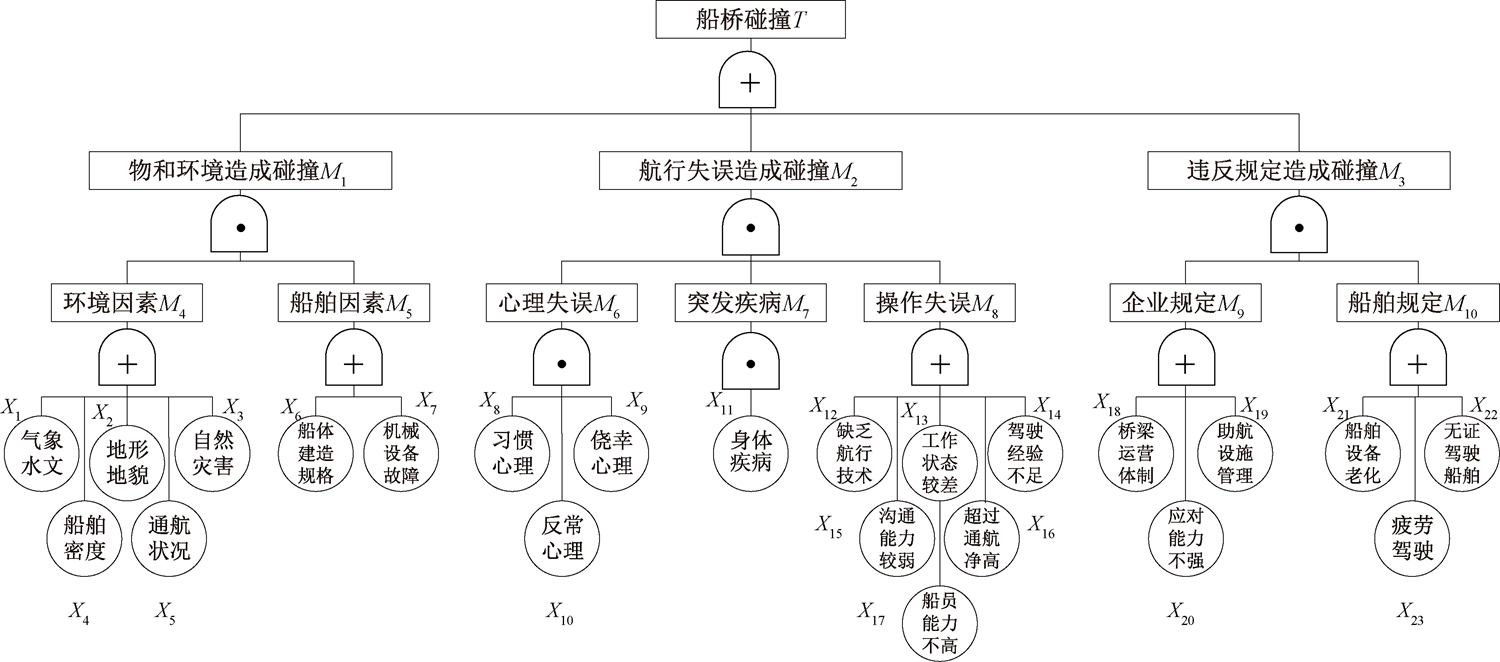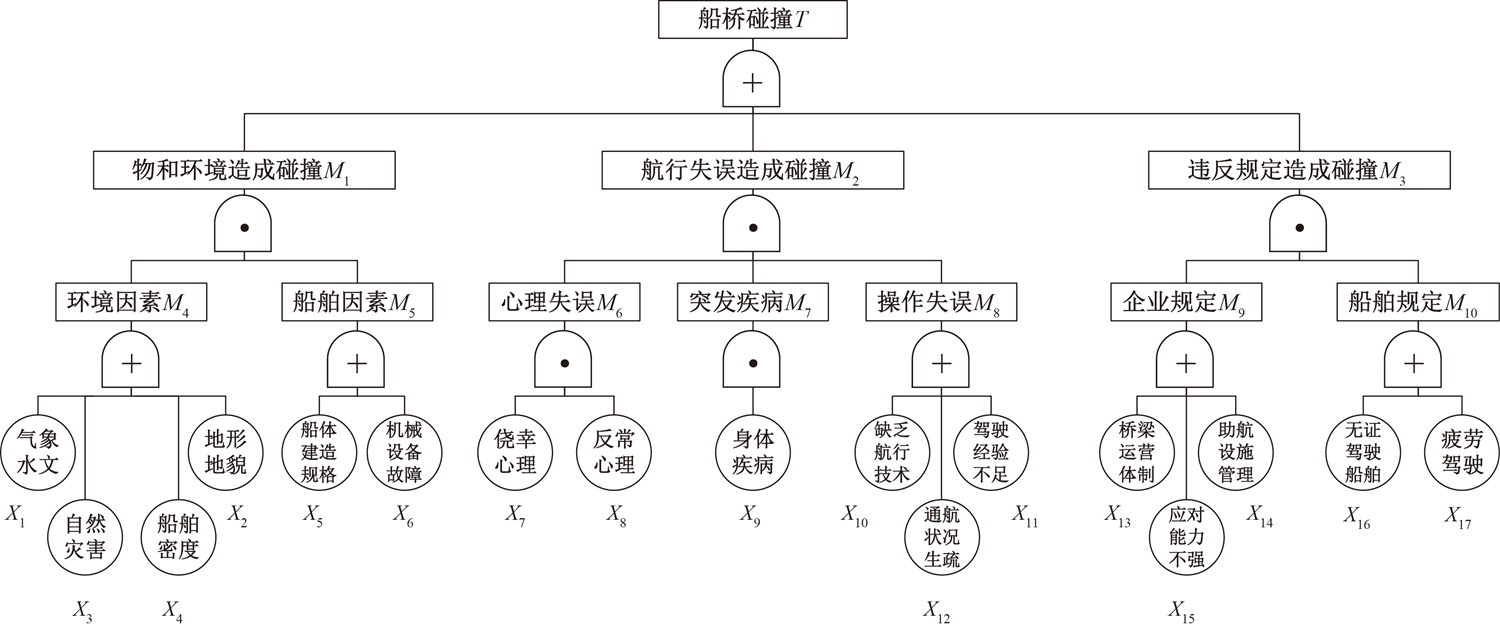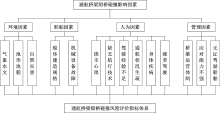| [1] |
付姗姗, 张悦, 席永涛, 等. 多因素耦合下长江口水域交通事故致因链分析[J]. 中国安全科学学报, 2023, 33(3):60-67.
doi: 10.16265/j.cnki.issn1003-3033.2023.03.1367
|
|
FU Shanshan, ZHANG Yue, XI Yongtao, et al. Causal chain of maritime accidents in Yangtze River estuary considering coupling effects of multi-risk factors[J]. China Safety Science Journal, 2023, 33(3):60-67.
doi: 10.16265/j.cnki.issn1003-3033.2023.03.1367
|
| [2] |
张智超, 张景峰, 杨栋, 等. 基于目标失效概率的桥梁船撞风险及防撞水准论证[J]. 公路交通科技, 2023, 40(2):72-80.
doi: 10.3969/j.issn.1002-0268.2023.02.010
|
|
ZHANG Zhichao, ZHANG Jingfeng, YANG Dong, et al. Demonstration of bridge-vessel collision risk and fortification criterion against vessel collision based on target failure probability[J]. Journal of Highway and Transportation Research and Development, 2023, 40(2):72-80.
|
| [3] |
中华人民共和国交通运输部. 船舶碰撞桥梁隐患治理三年行动实施方案(交办水〔2020〕69号)[Z]. 2020-12-23.
|
| [4] |
陈伟炯. 面向21世纪的海事控制理论探讨:船舶营运安全的基本要素结构[J]. 中国航海, 1999, 22(1): 34-38.
|
|
CHEN Weijiong. An exploration of marine accident control theories for the 21st century:structure of the basic elements of ship operation safety[J]. Navigation of China, 1999, 22(1): 34-38.
|
| [5] |
江玉杰, 万征, 陈继红. 基于有序选择模型的船舶事故严重度致因分析[J]. 中国安全科学学报, 2023, 33(12):131-139.
doi: 10.16265/j.cnki.issn1003-3033.2023.12.0245
|
|
JIANG Yujie, WAN Zheng, CHEN Jihong. Causation analysis of ship accident severity based on ordered choice model[J]. China Safety Science Journal, 2023, 33(12):131-139.
doi: 10.16265/j.cnki.issn1003-3033.2023.12.0245
|
| [6] |
WU Bing, YIP T L, YAN Xinping, et al. Fuzzy logic based approach for ship-bridge collision alert system[J]. Ocean Engineering, 2019,187:106 152-106 164.
|
| [7] |
孔宪卫. 桥区水域船舶通航安全研究[D]. 天津: 天津大学, 2020.
|
|
KONG Xianwei. Study on safety of ship navigation in the waterway of bridge area[D]. Tianjin: Tianjin University, 2020.
|
| [8] |
徐飞. 基于贝叶斯网络的船舶触碰事故致因分析[D]. 大连: 大连海事大学, 2021.
|
|
XU Fei. Causal analysis of ship allision accidents based on Bayesian network[D]. Dalian: Dalian Maritime University, 2021.
|
| [9] |
高延祥. 基于倒塌概率的桥梁抗撞设计方法研究[D]. 武汉: 华中科技大学, 2022.
|
|
GAO Yanxiang. Study on crashworthiness design of bridges basing on probability analysis[D]. Wuhan: Huazhong University of Science and Technology, 2022.
|
| [10] |
高攀, 李丝蔓, 赵旭, 等. 五元联系数在大中型水库船桥碰撞风险评价中的应用: 以三峡库区为例[J]. 安全与环境学报, 2023, 23(10):3419-3428.
|
|
GAO Pan, LI Siman, ZHAO Xu, et al. Application of the five-element correlation number in the ship-bridge collision risk assessment in medium and large reservoirs:a case study of the Three Gorges Reservoir Region[J]. Journal of Safety and Environment, 2023, 23(10): 3419-3428.
|
| [11] |
杨峰. 南京长江第五大桥船桥碰撞安全风险评估研究[D]. 大连: 大连海事大学, 2018.
|
|
YANG Feng. A tentative study of risk assessment of ship-bridge collision for Nanjing Yangtze River Bridge V[D]. Dalian: Dalian Maritime University, 2018.
|
| [12] |
钱国辉. 既有航道桥梁船舶撞击风险评估及抗撞性能分析[J]. 中国市政工程, 2022, 236(1):99-102.
|
|
QIAN Guohui. Ship collision risk assessment and anti-collision performance analysis of existing navigable bridges[J]. China Municipal Engineering, 2022, 236(1): 99-102.
|
| [13] |
KIM D H. Investigating collision risk factors perceived by navigation officers in a close-quarters situation using a ship bridge simulator[J]. Cognition, Technology & Work, 2021, 23(3): 419-428.
|
| [14] |
刘灵芝. 基于IWRAP理论的船舶碰撞概率计算方法研究[D]. 武汉: 武汉理工大学, 2016.
|
|
LIU Lingzhi. Research on calculation method of ship collision probability based on the theory of IWRAP[D]. Wuhan: Wuhan University of Technology, 2016.
|
| [15] |
OLORUNLEKE O F, ANTHONY O O, STANLEY A O, et al. Validation of selected gridded potential evapotranspiration datasets with ground-based observations over Ogun-Osun River Basin, Nigeria[J]. Arabian Journal of Geosciences, 2024, 17(5):113213-113 221.
|











